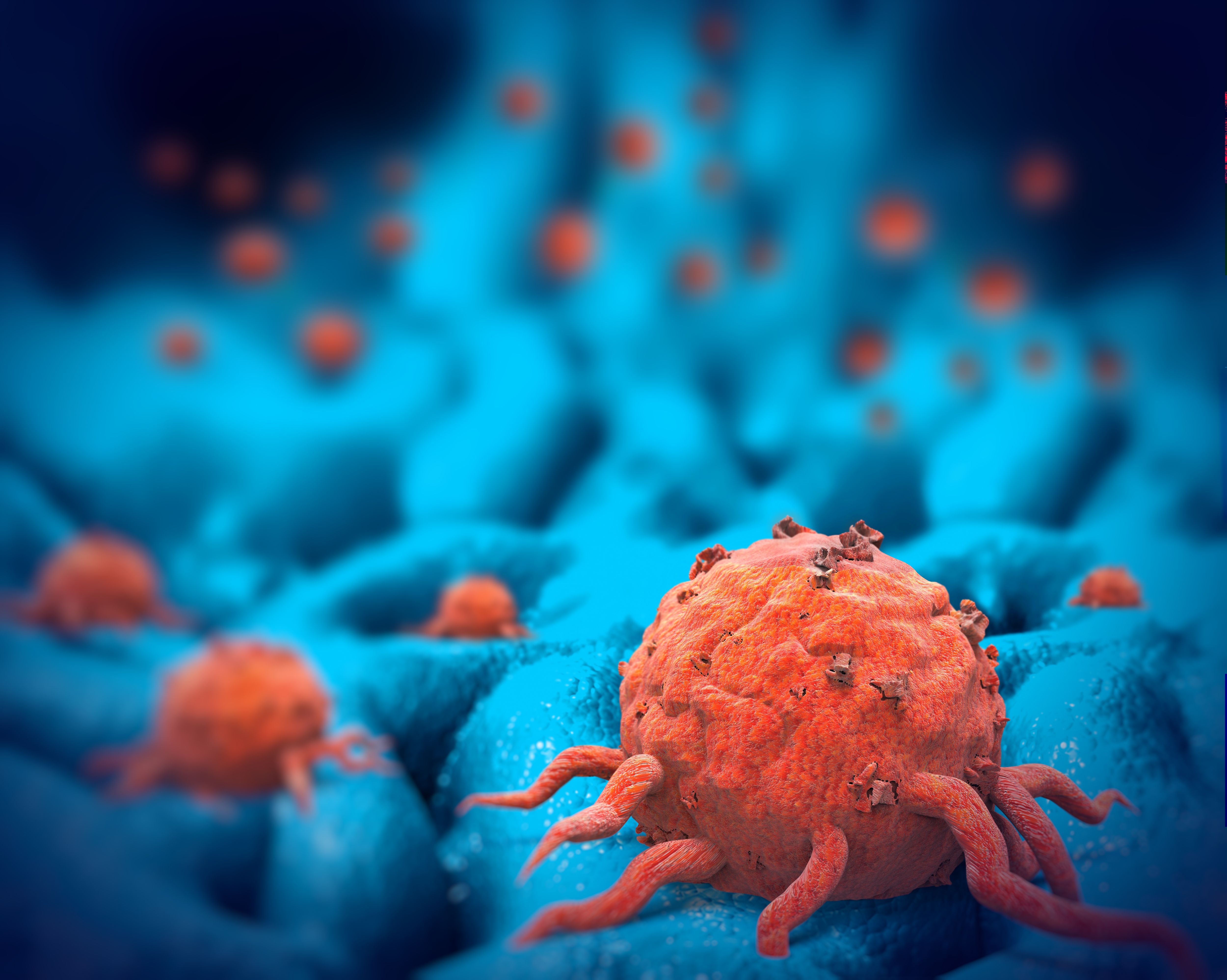Rucaparib Prolongs rPFS in mCRPC Population, Including BRCA/ATM-Positive Subgroups
Results from the phase 3 TRITON3 study show that rucaparib improves survival in multiple metastatic castration-resistant prostate cancer populations.

Rucaparib (Rubraca) demonstrated improvement in radiographic progression-free survival (rPFS) by independent radiology review (IRR) in patients with metastatic castration-resistant prostate cancer (mCRPC) compared with a control group treated with docetaxel, abiraterone acetate [Zytiga], or enzalutamide [Xtandi] in the phase 3 TRITON3 study (NCT02975934).1
The primary end point of the TRITON3 study was met with this result. Moreover, results announced in a press release by Clovis Oncology, Inc showed that rPFS benefit was observed in the intent-to-treat population as well as subgroups of patients with BRCA or ATM mutations. The findings will be included in a new drug application submission to the FDA.
“We believe that the positive results from TRITON3 further demonstrate the important role that [rucaparib] can play as a treatment option for men with metastatic castration-resistant prostate cancer associated with homologous recombination deficiency, and we look forward to submitting these data to the regulatory authorities in the United States during Q1 2023, “said Patrick J. Mahaffy, president and chief executive officer of Clovis Oncology, in the press release.
TRITON3 is a phase 3, multicenter, open-label, randomized trial of rucaparib vs a control group in patients with chemotherapy-naïve mCRPC. A total of 405 patients were enrolled and all patients had a BRCA or ATM mutation. The secondary end points assessed in the study were overall survival, objective response rate, duration of response, time to prostate-specific antigen (PSA) progression, PSA response, change in patient-reported outcomes, clinical benefit rate, pharmacokinetics, and number of patients with adverse events (AEs).2
For the primary analysis, investigators looked at all randomized patients, and the BRCA-mutated mCRPC subgroup.
Results showed that rPFS favored the rucaparib arm vs the control arm (HR, 0.50; 95% CI, 0.36-0.69) in the BRCA-mutated population. The result was statistically significant. The median PFS observed with rucaparib was 1.2 months compared with 6.4 in the control arm (P <.0001).
In the ITT population, there was also a statistically significant rPFS advantage with rucaparib vs the control (HR, 0.61; 95% CI, 0.47-0.80). The median PFS in the ITT population was 10.2 months in the rucaparib arm compared with 6.4 months in the control arm (P =.0003).
In ATM-mutated population, the rPFS was longer in the rucaparib arm compared with the control arm but did not reach the threshold for statistical significance (HR, 0.97; 95% CI: 0.59-1.52). The median rPFS was 8.1 months with rucaparib vs 6.8 months in the control arm (nominal P =.8421).
Results for the key secondary end points in the had not yet reached maturity at the time of the analysis.
In terms of safety, the AEs observed with rucaparib in the study was consistent with the drug’s labeling. The most common treatment-emergent AEs (TEAEs) in the rucaparib arm were anemia/decreased hemoglobin (23.7%), neutropenia/decreased neutrophil count (7.4%), asthenia/fatigue (7.0%), thrombocytopenia/decreased platelet count (5.9%) and increased ALT/AST (5.2%). There was 14.8 percent treatment discontinuation rate in the rucaparib arm vs 21.5% in the control arm.
“Not only does this provide a potential treatment option for eligible men with earlier stage disease, but it is the first and only PARP inhibitor that has demonstrated superior radiographic PFS compared to chemotherapy, which is today the standard of care for these patients,” said Mahaffy in the press release. “Most importantly, I would like to thank the patients, physicians, and our colleagues whose commitment to this trial made these results possible, which now offer the potential to make a difference in the lives of many men with advanced prostate cancer.”
Extensive details about the findings from TRITON3 will be presented at the Prostate Cancer Foundation Annual Scientific Retreat in early 2023.
REFERENCES:
1. TRITON3 phase 3 trial of Rubraca® (Rucaparib) achieves primary endpoint in men with metastatic castration-resistant prostate cancer with BRCA or ATM mutations. News release. Clovis Oncology, Inc. October 3, 2022. Accessed October 4, 2022. https://bit.ly/3eckmWO
2. A study of rucaparib versus physician's choice of therapy in patients with metastatic castration-resistant prostate cancer and homologous recombination gene deficiency (TRITON3). ClinicalTrials.gov. Updated March 24, 2022. Accessed October 4, 2022. https://clinicaltrials.gov/ct2/show/NCT02975934









